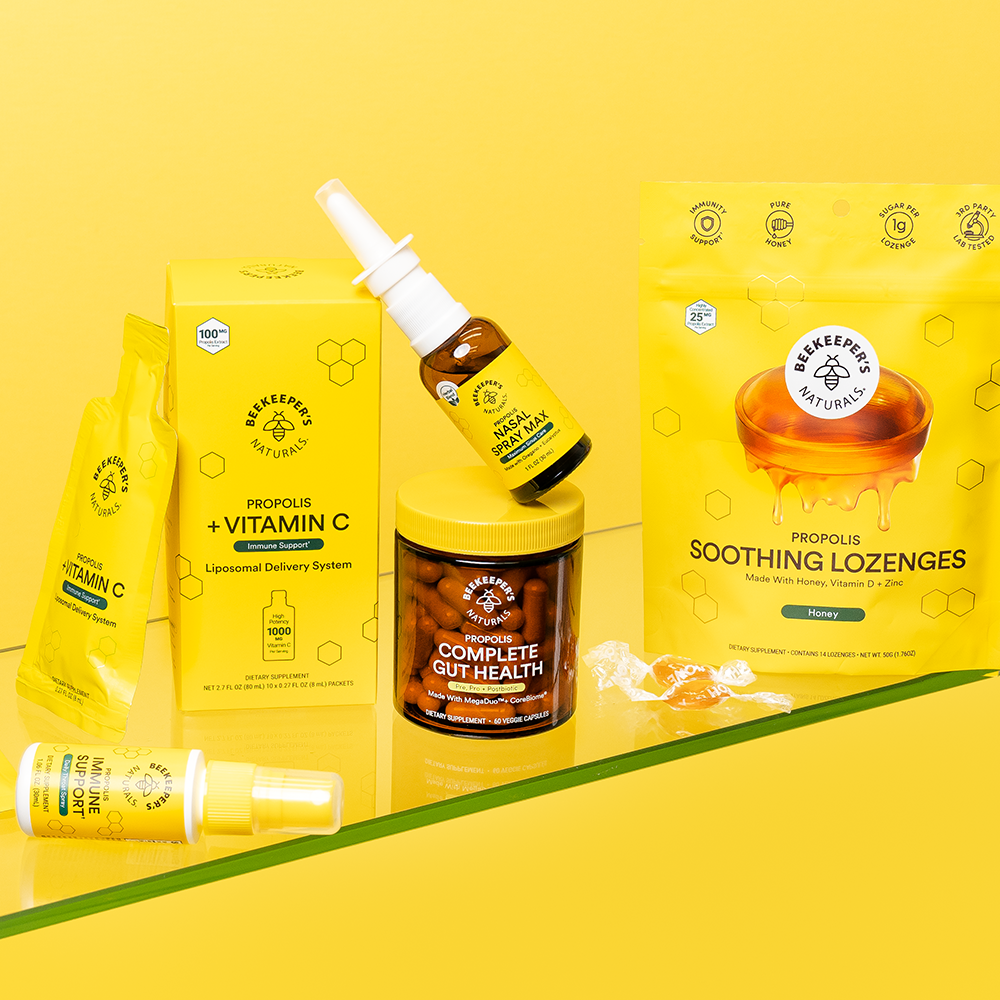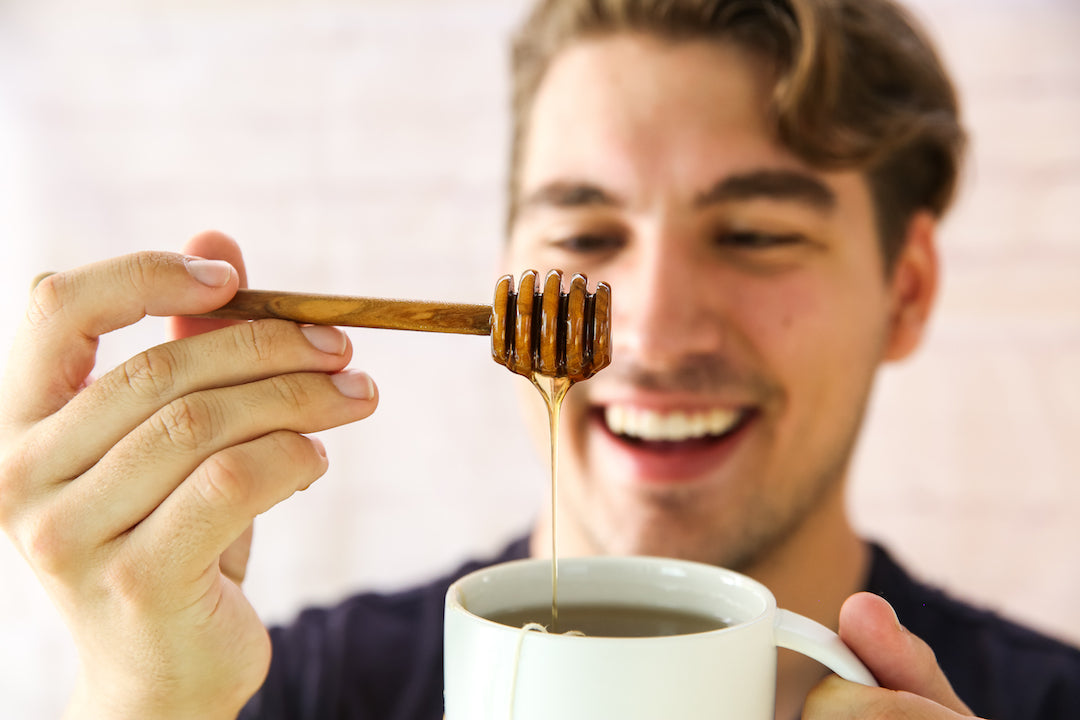Did you know that the average American consumes about 130 pounds of sugar each year?! We're practically eating our own weights in sugar—ew.
Excessive sugar consumption is a huge issue here in North America. It’s responsible for dozens of deadly (yet highly preventable) inflammatory diseases, like diabetes, obesity, and heart disease. It's undeniable that we need to clean up our diets and drastically cut A LOT of our sugar intake.
But where does honey fit in to all of this? While raw honey is technically a sweetener, that's pretty much all it has in common with the highly processed sugars that plague our modern diets. And there is no easier way to demonstrate how different these two foods are than by comparing how sugar and raw honey are each made.
How modern sugar is made…
In ancient times, sugarcane was harvested and ground into a semi-crystallized sticky paste and called “sugar”, which the Arabic people believed to have powerful medicinal properties. Fast forward a couple thousand years and our version of processing sugar has become nearly unrecognizable. Here's how it's made:- Cultivated sugarcane stalks get harvested and transported to mills to be processed. The sugarcane is then unloaded, cleaned with water and agitation, shredded in a machine, and crushed under massive rollers to extract most of the juice.
- At this point, the pure sugarcane juice is a murky green color. Yep, that package of white sugar in your kitchen was originally a green liquid! But that doesn’t last long. It is then clarified to remove impurities by adding a splash of milk of lime (a diluted solution of calcium hydroxide) and heat. This neutralizes the acidity of the juice and coagulates unwanted solids. After filtration, the clarified juice is 85 percent water and still has the same composition as the raw pressed sugarcane juice—it's just a little less murky and has now turned bright yellow from reacting with the lime.
- Two-thirds of the remaining water is then removed through a series of heated vacuum evaporation chambers. Next, the syrup is further evaporated in a separate vacuum pan until it is nearly waterless and completely saturated with sugar. A few sugar granules are then tossed in, which serve as the “seed” crystals which instruct the other sugar molecules how to molecularly arrange themselves (if you’ve ever read Vonnegut’s classic novel Cat’s Cradle, it’s actually a similar molecular action to ice nine. It’s kind of crazy!)
- The dense mixture of syrup and sugar crystals are stirred and slowly cooled to encourage further crystallization. Any remaining syrup is then separated from the granules by whipping at super high speeds in a centrifuge (about 1200 rpms). The removed nutrient-rich syrup becomes blackstrap molasses. The raw granulated sugar crystals move on to be bleached, dried at high heats, and packaged for consumption—pure, unadulterated white sugar. Phew! What a process!

How raw honey is made…
The process for making honey is a lot different. Bees make honey by collecting small amounts of nectar from hundreds and hundreds of different flowers. These flowers generally lie within a 4 or 5 mile radius from their hive (bees know how to #eatlocal). As they carry the nectar back to their have, bees mix it with a special enzyme they carry in their glands. This enzymatic nectar is then stored in wax honeycomb cells, where the water content steadily evaporates (bees actually fan it with their wings to help speed up the process), eventually forming the thick, syrupy elixir we call honey! The bees then seal the finished honey and all its nourishing plant power with wax and save it for later. (That’s when a beekeeper knows the honey is ready for careful, sustainable harvesting. Then it's into a jar and on your table!)
Some pretty sweet health benefits...
If it wasn't clear already, modern refining methods to create pure, white sugar have been taken to the extreme—so much so that it is no longer really a food. But, coming straight from the hive, raw honey still has a lot of good stuff going on. (The bees have been making honey for millions of years. They totally know what they're doing.)
A review published in 2017 concluded that raw honey has powerful demonstrated germ-fighting, antiviral, and antioxidant properties. Another study suggests that it may be a useful natural sugar in reducing internal inflammation and helping to balance insulin levels in those with insulin sensitivity, diabetes, and other metabolic disorders. It's also rich in vitamins as well as beneficial enzymes that support digestion and energy production. And honey tastes slightly sweeter than cane sugar, so you can use less of it in when making healthy bakes and treats.
Blunt summary: Forget sugar. Raw honey is natural, healthy, sweet, and has loads of medicinal potential.
[embed]https://www.youtube.com/watch?v=OIalPf6x5MU&feature=youtu.be[/embed]In the kitchen with honey!
Ready to get sticky in the kitchen with our fave wholesome sweetener? Get ready to tuck into a delicious stack of our fave Honey Turmeric Pancakes with this recipe inspo! (Remember, any time can be breakfast time.) Happy drizzling!TURMERIC WILDFLOWER HONEY PANCAKES RECIPE
- 2 eggs
- 2 tbsp coconut oil or butter (plus some for pan)
- 1 ½ cups gluten free flour blend (we used half almond flour, half coconut flour)
- ½ cup raw BKN wildflower honey
- 2 tbsp turmeric power (we used Moodbeli turmeric powder)






